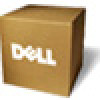Dell Broadcom NetXtreme Family of Adapters Broadcom NetXtreme 57XX User Guide - Page 160
Load Balancing and Failover
 |
View all Dell Broadcom NetXtreme Family of Adapters manuals
Add to My Manuals
Save this manual to your list of manuals |
Page 160 highlights
Fault Tolerance When you perform network backups in a nonteamed environment, overall throughput on a backup server adapter can be easily impacted due to excessive traffic and adapter overloading. Depending on the number of backup servers, data streams, and tape drive speed, backup traffic can easily consume a high percentage of the network link bandwidth, thus impacting production data and tape backup performance. Network backups usually consist of a dedicated backup server running with tape backup software such as NetBackup, Galaxy or Backup Exec. Attached to the backup server is either a direct SCSI tape backup unit or a tape library connected through a fiber channel storage area network (SAN). Systems that are backed up over the network are typically called clients or remote servers and usually have a tape backup software agent installed. Figure 9 shows a typical 1 Gbps nonteamed network environment with tape backup implementation. Figure 9. Network Backup without Teaming Because there are four client servers, the backup server can simultaneously stream four backup jobs (one per client) to a multidrive autoloader. Because of the single link between the switch and the backup server, however, a 4-stream backup can easily saturate the adapter and link. If the adapter on the backup server operates at 1 Gbps (125 MB/s), and each client is able to stream data at 20 MB/s during tape backup, the throughput between the backup server and switch will be at 80 MB/s (20 MB/s x 4), which is equivalent to 64% of the network bandwidth. Although this is well within the network bandwidth range, the 64% constitutes a high percentage, especially if other applications share the same link. Load Balancing and Failover As the number of backup streams increases, the overall throughput increases. Each data stream, however, may not be able to maintain the same performance as a single backup stream of 25 MB/s. In other words, even though a backup server can stream data from a single client at 25 MB/s, it is not expected that four simultaneously running backup jobs will stream at 100 MB/s (25 MB/s x 4 streams). Although overall throughput increases as the number of backup streams increases, each backup stream can be impacted by tape software or network stack limitations. For a tape backup server to reliably use adapter performance and network bandwidth when backing up clients, a network















